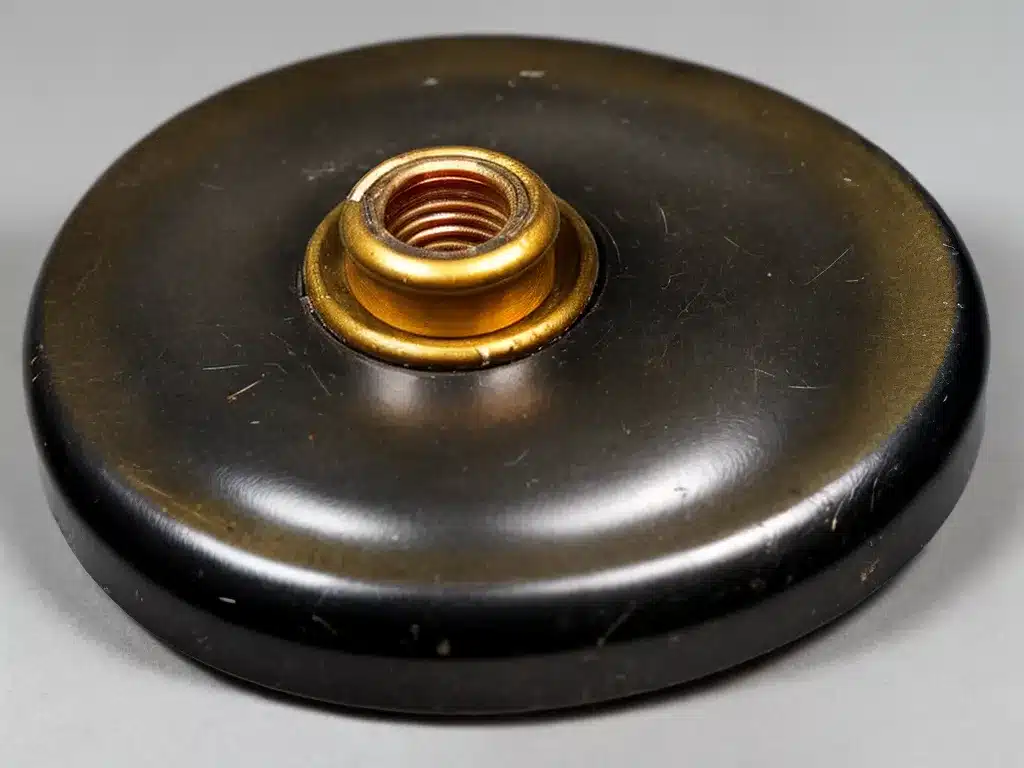
Introduction
Bakelite was one of the earliest plastics, developed in the early 20th century. It was used to make a variety of household objects and appliances, including light sockets. Bakelite sockets were common in homes built in the 1920s. However, these antique sockets pose some serious electrical dangers that many homeowners today are unaware of.
In this article, I will provide an in-depth look at bakelite sockets, why they can be hazardous, and what you need to know if you have them in your vintage home. My goal is to raise awareness about these outdated and unsafe sockets so that homeowners can address any risks.
What is Bakelite?
Bakelite was developed in 1907 by Leo Baekeland and was one of the first synthetic plastics ever created. It was made from phenol formaldehyde resin and was known for its heat resistance, mechanical strength, and electrical insulating properties.
Bakelite was moldable when heated and retained its shape when cool. This made it ideal for mass production of products like telephones, clocks, kitchenware, jewelry, and more.
For electrical applications, bakelite was used for everything from lamp bases to sockets to insulators. It did not conduct electricity and generated very little heat, so it was a revolutionary material at the time.
The Rise of Bakelite Sockets
In the 1920s, bakelite sockets started replacing brass sockets as the material of choice for light sockets and outlets.
Bakelite sockets had several advantages:
- They were less expensive to produce than brass.
- They were lightweight yet durable.
- They resisted heat and electricity.
- They came in fun, decorative colors like red, green, black, and ivory.
Homes built in the 1920s often incorporated these colorful bakelite sockets throughout. They can be identified by their glossy finish and Art Deco styling.

A typical green bakelite socket from the 1920s
While considered high-quality and modern in their time, these antique bakelite sockets fail to meet today’s electrical standards.
Dangers and Risks of 1920s Bakelite Sockets
While bakelite sockets served homes well for decades, they pose some severe safety hazards that should not be overlooked today:
Brittleness from Age
The plastic and resin materials in these sockets become brittle and fragile over time. The constant heating and cooling cycles accelerate this process.
As bakelite ages, it can crack or break easily. Exposed wires pose a contact hazard. Fragments also raise the risk of fires and shorts.
Arcing and Fire Risks
Antique bakelite sockets have much more space between the bulb and socket than modern sockets. This gap can lead to arcing, which is the discharge of electricity across air spaces.
Arcing generates excessive heat. The bakelite can melt or ignite, leading to catastrophic fires.
Inferior Wiring
Bakelite sockets likely have old cloth-covered wiring. This insulation type dries out, cracks, and fractures over time. This deteriorates connections and raises resistance.
Connections may loosen over decades of use, also increasing heat and fire hazards. The wiring is simply not designed to last over 100 years.
Lack of Grounding
These vintage sockets have no grounding pin. This means no ground fault protection. Appliances and humans can be exposed to serious shock hazards.
Exposure of Live Parts
Many antique bakelite sockets have exposed metal screws and contacts. These live parts pose a serious contact hazard. Inserting bulbs exposes fingers to live voltage.
Recommendations for Homeowners
If your home dates back to the 1920s or you notice any antique bakelite sockets, I strongly advise the following precautions:
- Hire an electrician to inspect all electrical systems. They can check for damage, wear, and fire risks.
- Consider upgrading to modern sockets to take advantage of improved safety features. This eliminates the risks posed by aged bakelite.
- At minimum, install GFCI outlets on the circuit to help prevent shocks.
- Never touch sockets with wet hands or insert bulbs during storms. The shock risk is too great.
- Check for cracks or arcing regularly. Any signs of excess heat or damage warrant replacement.
- Never overload circuits or use higher wattage bulbs than rated. This stresses old wiring.
Replacing original bakelite sockets can improve the safety, performance, and aesthetics of your vintage home. While not a guaranteed fire prevention method, upgrading does significantly lower the risks.
Conclusion
Bakelite sockets were an important innovation in the 1920s, but they fail to stand the test of time. Their brittle nature, fire hazards, and lack of modern safeguards make them too dangerous for continued use today.
While visually appealing, these antique bakelite sockets should not be romanticized. Many homeowners are oblivious to their risks. But a little awareness and electrical upgrading can prevent disaster.
I hope this article has provided a comprehensive overview of bakelite socket dangers. Protect your home by addressing any risks posed by outdated electrical components. If in doubt, consult an electrician for guidance and inspection. Do not let vintage charm put your safety in peril.
